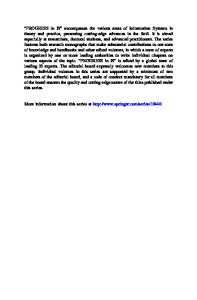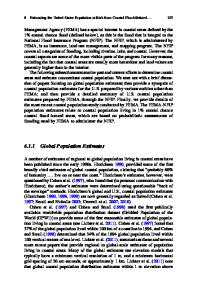Estimating population abundance using counts from an auxiliary population
- PDF / 863,442 Bytes
- 18 Pages / 439.37 x 666.142 pts Page_size
- 109 Downloads / 349 Views
Estimating population abundance using counts from an auxiliary population Matthew R. P. Parker1
· Vivian Pattison2,3 · Laura L. E. Cowen1
Received: 23 October 2019 / Revised: 9 June 2020 © Springer Science+Business Media, LLC, part of Springer Nature 2020
Abstract We develop a new method for estimating population abundance for notoriously difficult to count populations. This is made possible using an easy to count auxiliary population with a known link to the target population under the framework of a layered hidden Markov model. We apply the new methods to estimate the breeding population of an Ancient Murrelet seabird colony, using Ancient Murrelet chicks as an auxiliary population. We compare our results to those of the established survey methodology from the Canadian Wildlife Service (CWS), which similarly shows a decrease in population over 1995 to 2006. Our methods improve upon the CWS survey methods by allowing density differences across sampling sites, and by allowing estimates to be made between CWS survey years.
Handling Editor: Pierre Dutilleul Thanks to the many Laskeek Bay Conservation Society volunteers and staff who have been counting Ancient Murrelet chicks for almost 30 years. Thanks to Kelly Runyon and Chris Bone for mapping advice. Analyses were run on Westgrid/Compute Canada with assistance from Belaid Moa. Patrick O’Hara and Tony Gaston provided helpful comments that greatly improved this manuscript. This work was partly funded by Natural Sciences and Engineering Research Council of Canada grant 327025 to LC. MP would like to acknowledge the Visual and Automated Disease Analytics Program for funding support during his MSc program. Electronic supplementary material The online version of this article (https://doi.org/10.1007/s10651020-00455-3) contains supplementary material, which is available to authorized users.
B
Matthew R. P. Parker [email protected] Laura L. E. Cowen [email protected]
1
Mathematics and Statistics, University of Victoria, PO BOX 1700, STN CSC, Victoria, BC V8W 2Y2, Canada
2
Geography, University of Victoria, PO Box 1700, STN CSC, Victoria, BC V8W 2Y2, Canada
3
Laskeek Bay Conservation Society, PO Box 867, Queen Charlotte, BC VOT 1SO, Canada
123
Environmental and Ecological Statistics
Keywords Ancient Murrelet · Auxiliary population · Binomial thinning · Hidden Markov model · N-mixture models · Replicated count data
1 Introduction Statistical methods of population abundance estimation play a critical role in species conservation efforts. Knowledge of current population levels, as well as both current and past population trends can be used to inform important policy and decision making processes. Accurate estimates of wildlife population abundances and trends are often essential for understanding ecosystems and for managing wildlife. Developing less labour-intensive methods of producing accurate population estimates is an important goal of population biologists. Advancements in computing technologies are helping to realize this goal by allowing for more computatio
Data Loading...











